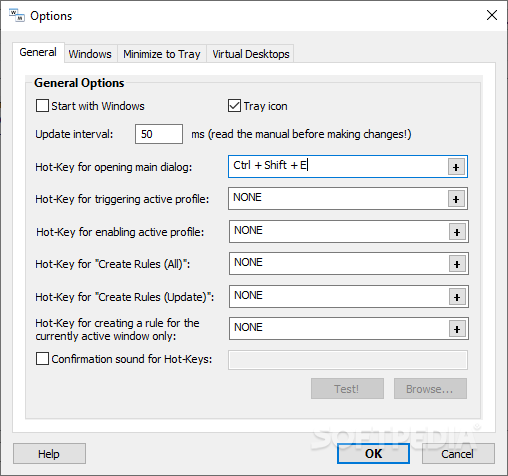

#Windowmanager click through windows#
Convert windows to icons and icons to windows.Raise windows (bring them to the front of others).Lower windows (send them to the back of others).Size and position client windows on the screen interactively.The twm window manager is primarily a window manipulation tool. Raising Windows (bringing in front of others)īutton Control of Window Manager Functions Shuffling the Window Stack: Raise and Lower Additional information on customizing the operation of twm is provided in Chapter 10. This chapter describes twm, the standard window manager distributed with X. Nowadays a better example for the FNDSESSION_EXEC key would be the following, which generates standard session. Optional field to describe the command used to build the list of supported desktops for this display manager So far the reserved keys are KDE, KDM, GNOME, XDM and E17 Unique key used by drakdm to write the DISPLAYMANAGER variable in /etc/sysconfig/desktop. Here is /usr/share/X11/dm.d/nf for example:įNDSESSION_EXEC="/usr/sbin/chksession -K" Urpmf /usr/share/X11/dm.d can be used to check currently used filenames and numbers. You may wish that prefdm tries for your new dm before xdm (always installed with X.org), then the number has to be less than 30.

The smaller number has the highest priority. This 2 digits number will be used to choose a dm when no DISPLAYMANAGER or DESKTOP variable has been defined in /etc/sysconfig/desktop.

So, it is highly recommended to check with urpmf /etc/X11/wmsession.d/NN that NN is not already taken.Īdd a file to describe the new display manager in /usr/share/X11/dm.d. Having 2 files with the same numbers is possible, but some programs ( for example: Xtart ) assume that no files have the same number. The first is KDE, and the ( current ) last is pekwm ( 30 ). The name of the session file is always NNname, with NN the position in the list, and name is the name as defined in the file. The script can assume that it is launched with X initialized, by xinit usually. Nowadays there is no more need to use %make_session in %post and %postun, this is automagically handled by RPM filetriggersįor consistency, a wm called mywm should have a script called startmywm, if a user wants to launch it from the command line without searching too much. In practice, you will always see almost the same line:Īll you have to do is to drop a session file in the /etc/X11/wmsession.d/ directory. The rest of the file is the script used to launch the wm. The file should have the +x bit set in order to be taken into account. Then, EXEC is the executable used to launch the program. chksession does not take it into account, for now.ĭESC is the description, and is'nt shown either: it is ignored by the chksession script. Then, the icon, but right now, no dm uses it. rpmold and ~ are not taken into account.įirst NAME is the name of the wm, displayed in the desktop manager.

The current script use chksession to read the different session files and to modify the config file of the different dm. It updates the configuration of kdm and of gdm. %make_session would only run the program /usr/sbin/fndSession.
#Windowmanager click through update#
Nowadays there is no more need to use %make_session in %post and %postun to update dm config, this is automagically handled by RPM filetriggers This directory is used to store information about the different window managers ( or wm in short) that can be accessed by the different display managers ( also called a dm, or a login manager ).Įach dm uses different configuration files, so to update their configuration, you should drop a file in the /etc/X11/wmsession.d directory.


 0 kommentar(er)
0 kommentar(er)
